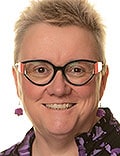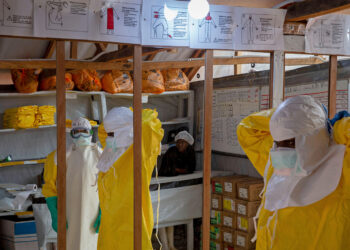Aging patients and physicians nearing retirement are among the reasons Ontario’s comprehensive family physician (FP) workforce is declining, causing concern among experts.
A recent study published in Canadian Family Physician found that after 2019 (the last year before the beginning of the COVID-19 pandemic), growth in the overall comprehensive FP workforce in Ontario stagnated. The FP workforce totaled 9377 physicians in 2019 and 9375 physicians in 2022. Furthermore, in 2022, for the first time, there was a decline in the proportion of early-career FPs (age < 35 years).
The updated comparison of FP cohorts in 2008, 2013, and 2019 also found that an increasing proportion of the workforce is aged 65 years or older (10% in 2008, 14.4% in 2013, 13.9% in 2019, and 15.2% in 2022). Correspondingly, an increasing proportion of patients was attached to near-retirement FPs (15.5%, for a total of 1.74 million overall) by 2022.
Notably, the size of the oldest FP cohort (age ≥ 70 years) also increased in 2022. Patients attached to these near-retirement FPs were older and had higher levels of chronic conditions compared with patients across the overall FP workforce. An increasing proportion of patients had the highest level of complexity, and practices of all FP age groups included increasing proportions of patients with the highest resource needs (eg, those with chronic obstructive pulmonary disease, congestive heart failure, diabetes, or frailty).

“The Canadian Institute for Health Information estimates a similar proportion of the overall physician population in Canada are 55 or older, and the OurCare national survey estimates that 1 in 5 Canadians already do not have access to a regular source of primary care,” lead study author Kamila Premji, MD, PhD, Clinical Research Chair in Universal Access to Comprehensive Primary Care at the University of Ottawa, told Medscape Medical News. “I expect there will likely be similar challenges around succession planning for retiring physicians across the country.”

Cathy Risdon, MD, professor and chair of Family Medicine at McMaster University in Hamilton, Ontario, agreed. “All of the provinces are waking up to this shortage of FPs and understanding what a huge impact it has on the system and on patients’ lives if we can’t address it,” she told Medscape Medical News. “The sense of urgency is pan-Canadian.”
Contributing Factors
Premji and Risdon (who was not involved in the study) pointed to key reasons for the current situation and what might be done about it.
Planning failures. “We failed in our health human resource planning to make sure we were training enough people to account for the population growth in Ontario and the changing demographics of age,” Risdon said. Several decades ago, admissions to medical schools in Canada were “slowed down” as a cost-saving measure. “We’re paying for that mistake now because we don’t have enough training spots. We’re not replacing our needs with our trainees, and that’s a big, big problem.”
Specialization preferred. “No one could have imagined what a dramatic change there’s been over the past 10 years in people choosing to do comprehensive family medicine,” Risdon said. “The perception is that you can be more successful if you know a lot about a smaller field. But family medicine is a broad, challenging discipline. You need to know an enormous amount about a lot of things, so we’ve really tried to ensure that our education programs prepare residents for that breadth of practice.” Nevertheless, many new graduates are choosing to specialize.
Small business model risky, costly. “Our new graduates don’t want to inherit the primary care system that their mothers and fathers established,” Risdon said. That model was essentially a small business. “You hung your shingle, you hired staff, and you cared for patients. You paid the rent. You assumed the financial risk of operating a health facility. And everyone was very happy to have primary care distributed in the community, owned by small business owners.” The model worked until all costs increased as the healthcare system became more complex, and few investors put money behind primary care.
Workload. The workload of practicing FPs has grown, and support has not kept up, which is another reason that new FPs may not want to start their own practices in communities that might need them, Premji said. “Research has found that the workload per visit has grown by 35%-120% over the past 20 years. This is mostly workload that’s done behind the scenes, what we call ‘indirect care,’ and it’s usually not compensated.”
Indeed, a 2022 Commonwealth Fund (CMWF) survey found that 77% of Canadian FPs reported an increased workload compared with before the pandemic. This result is comparable with the CMWF average of 76% for nine other countries surveyed.
Given the increased workload, many new FPs don’t want to be responsible round the clock for the patients their practice would serve, when, in contrast, “they could work in a hospital where all their equipment, all their staffing, and everything is provided for them,” Risdon noted. “You don’t have to worry about running a small business or paying for those costs. And there is always someone that could cover you when you want to take a vacation or a week off.”
“It’s a big contrast right now between the two systems,” she noted, “and our graduates are voting with their feet if they can find a practice where they have good coverage, they’re part of a team, they can work really hard when they’re there, and they know that someone’s helping their patients when they’re not there.”
Team approach unfamiliar. Although a team approach has been recommended as a solution, physicians who have been practicing on their own or in a small group practice “can’t easily pick up and join another practice that has an existing team or the resources to fund a team,” Premji noted. “They have building leases, employees with contracts, equipment leases, etc. On the other hand, it may not be feasible for a small practice to hire a full-time allied health professional out of their own revenues.”
“However, having a hub of human resources that is situated in proximity to a few practices and that hires government-funded interdisciplinary professionals like dietitians, social workers, nurse practitioners, and pharmacists who are dedicated to serving the patients of those specific practices would make team-based care feasible,” she said.
Although the Ontario Ministry of Health (MOH) is helping to fund such interprofessional care teams, “You can’t knock on the FP’s door and say, ‘Great news. I’ve got a nurse practitioner and a pharmacist near where you do comprehensive care,” Risdon added. An FP who has run a solo practice for their entire career has to learn a new way of doing business. “Just plopping them into a team isn’t going to work without some support and some transition. Like everything else, it’s a multidimensional problem.”
Compensation. Compensation is often higher in medical fields outside primary care, and often there are no overhead expenses, Premji said. The cost of operating a small business, which is the form of Premji’s practice, “has increased dramatically. That’s stressful, especially when we cannot raise our ‘prices’ to keep up.” Family medicine in Ontario has operated for the past 10 years under policies that limit FPs’ access to a salary rather than a fee-for-service model. “Fee for service is much less financially stable and secure, especially for a new grad carrying over $100,000 in debt,” Premji said.
Lack of infrastructure. “We have a fragmented, inefficient healthcare system where the ways in which we collect information, share information, and communicate across settings are, frankly, archaic,” Premji said. “We need massive improvements in our health information-sharing infrastructure so that it is more efficient and connected. Right now, I have no line of sight into, say, what my patient’s pharmacy record looks like or where they took the requisition for the x-ray I gave them. I may not even know that the x-ray was completed because I haven’t received the report.
“I often don’t have any means to easily communicate with the team that is looking after my patient while they are hospitalized or in the emergency department,” Premji added. “I need to access multiple online portals, all with different usernames and passwords, to pull results for my patient that I haven’t received.”
Risdon added that although she is part of a group of leaders trying to support primary care, she still can’t get a list of all the doctors who practice primary care in her community. “We don’t even have a registry,” she said. “We have no way of using data to evaluate what we do or if something new were added. It would be fabulous if we had a picture of what was happening in our communities so we could plan, but we’re blind to those details. We don’t have a system that helps us map and track our capacity.”
Help on the Horizon?
Deepy Sur, PhD, CEO of the Ontario College of FPs (OCFP), Toronto, told Medscape Medical News, “Family physicians should be focusing on what they do best: caring for patients. By reducing unnecessary paperwork and administrative tasks and ensuring that compensation reflects the complexity of care today, family doctors can spend more time on patient care. In turn, this will lead to better working conditions, higher job satisfaction, and increased recruitment and retention.”

System-level infrastructure that reduces administrative burden and frees time for care is needed, she said. This infrastructure could include centralized referral; responsive and connected electronic medical records; digital tools such as artificial intelligence; and sustainable operational funding.
OCFP is working with the Primary Care Action Team to provide member feedback to ensure that solutions needed across practice models are developed, said Sur. The organization and its partners have been advocating for FP support, and the Ontario government, through the Primary Care Action Plan, has started working on it. “But it is important that all FPs, regardless of the model they practice in, be supported in the ways that meet their needs.
“The OCFP wants to see more residents making family medicine their first choice,” Sur added. “Ensuring that the right supports are in place for FPs will help medical students to see family medicine as a rewarding career choice.”
The study was supported by the Innovations Strengthening Primary Health Care Through Research Research Program, which is funded through the Health Systems Research Program of the Ontario MOH and the Ontario Ministry of Long-Term Care (MLTC). It was also supported by the International Credential Evaluation Service, which is funded by an annual grant from the Ontario MOH and MLTC. Premji was also supported by the PSI Graham Farquharson Early Career Knowledge Translation Fellowship and the Junior Clinical Research Chair in Family Medicine in the Department of Family Medicine at the University of Ottawa. Premji, Risdon, and Sur declared having no relevant financial relationships.
Marilynn Larkin, MA, is an award-winning medical writer and editor whose work has appeared in numerous publications, including Medscape Medical News and its sister publication MDedge, The Lancet (where she was a contributing editor), and Reuters Health.
Source link : https://www.medscape.com/viewarticle/ontarios-comprehensive-family-physician-workforce-dwindling-2025a1000ie4?src=rss
Author :
Publish date : 2025-07-11 07:32:00
Copyright for syndicated content belongs to the linked Source.









